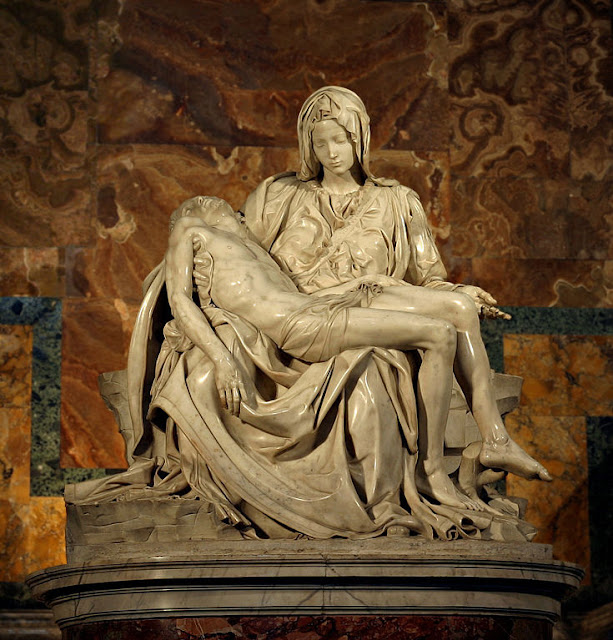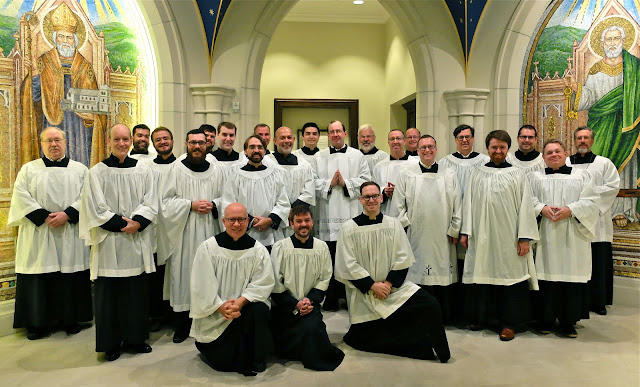Sexagesima
From St Aelred Catholic Church (OCSP)/edited.
Sexagesima, which translates from Latin as "sixtieth," is the eighth Sunday before Easter and the second Sunday before Lent. It holds a significant place in the liturgical calendar as it marks a preparatory phase leading into the Lenten season. The name "Sexagesima" is derived from its position in the countdown to Easter, although it does not literally represent the sixtieth day before Easter. Instead, it is part of a numerical series that includes Septuagesima (the ninth Sunday before Easter) and Quadragesima (the fortieth day, or Lent).
This Sunday has been recognized since at least the Fourth Council of Orléans in 541. The observance of Sexagesima is particularly important as it transitions the faithful from the festive nature of the Epiphany season into a more somber and reflective period.
The Pre-Lenten season is from the Medieval era and existed until it was removed from the Roman Rite Calendar in 1970 after Vatican II. However, as part of our Anglican Patrimony with special reference to our English Catholic sources, we have received the restoration of the Pre-Lent season. Pope Benedict XVI restored Pre-Lent in the Roman Rite for Ordinariate Form folks in 2012 (Anglicanorum Coetibus). This season is a way for us to prepare our bodies and souls for Lent by dwelling on our sins, what vices they are, contemplating on the virtue to defeat them, and then with the guidance of The Holy Spirit, preparing to keep a holy fast. Pre-Lent allows us to wean ourselves into the fast.
Originally the weeks of Septuagesima, Sexagesima, and Quinquagesima in tandem with Lent looked something like the Eastern Catholic Rites' 8 week Lent rather than our modern 6.5 week lent. Pope Melchiades and Sylvester were worried about people keeping a fast and abstaining on Fridays of Lent and how that might overly weaken their constitution on Saturdays, so they implemented these weeks to "make up" for a relaxed Saturday fast. Today, Eastern Catholics and the non-Catholic Orthodox relax the fast on Saturday with fish and wine which keeps some of this ancient flavor.
Sexagesima is the second week of Pre-Lent. It's name means "sixtieth" as it falls within the 50-60 day range from Easter, 57 to be specific. This week is described as "The Widowhood of The Church" because our Bridegroom, Christ, has been taken from us. In the parable of the wheat (Mt 13), the Medieval Church attributed the hundred-fold yield to virgins but the sixty-fold to the virgins. Thus we think of The Church as the widow bride who has yet to consummate her love with her bridegroom on the Last Day, when heaven and earth and all things are consummated to their Creator.
Sexagesima being 60 is 6 multiplied by 10.
Ten is the number of the "tithe," which literally means tenth. Our forefather Abraham tithed to Melchizedek the priest who offered bread and wine and was a foreshadow to Christ. So then ten signifies to us our due to God. Man was made after the Fall of the Angels (cm. Rev 12 to Gen 1), and for this reason Early Church Fathers speculate that we were made to restore the disorder created in the 9 Angelic Orders. This makes us the tenth order of rational creatures, the one made to restore order to God's Cosmic Symphony that we call Creation.
The 6 signifies then two things to us: God and Man. God is Trinity consisting of three persons: Father, Son, and Holy Ghost. And Man's faculties are three: memory, intellect, and will. Thus Man who is one but three owes praise and worship to the God who is one yet three, making 6. Thus Sexagesima exhorts us, Man, to give our due to God by offering our very souls to His purposes.
Observance within the Catholic Tradition
In the Catholic tradition, the observance of Sexagesima includes specific liturgical practices and readings. The day is often referred to as "Dominica Carnisprivii" among the Greeks and Slavs, indicating a beginning of abstinence from meat, which aligns with the themes of preparation for Lent 1. The liturgical color for the Mass is violet, symbolizing penance and reflection.
The readings for the day typically include the Epistle from St. Paul, specifically 2 Corinthians 11 and 12, which recounts the Apostle's sufferings and labors for the Church. The Gospel reading from Luke 8 discusses the Parable of the Sower, emphasizing the importance of receiving the Word of God and the different responses it elicits from individuals. This parable serves as a call to the faithful to examine their own receptiveness to God's message as they prepare for the upcoming Lenten season.
In addition to the readings, the liturgy includes specific prayers and hymns that reflect the themes of conversion and preparation. The faithful are encouraged to engage in self-examination and to begin contemplating their Lenten observances, which may include fasting, almsgiving, and increased prayer.
Overall, Sexagesima serves as a vital liturgical marker that invites the faithful to begin their journey toward Lent with a spirit of reflection and readiness for the spiritual challenges that lie ahead.
References
- Catholic Encyclopedia Sexagesima / The Encyclopedia Press
- Catholic Encyclopedia Septuagesima / The Encyclopedia Press
- General Audience of 5 March 2003, Ash Wednesday 1 / Pope John Paul II

.jpg)





Comments
Post a Comment
Your comments will be appreciated and posted if 1) they are on topic and 2) preserve decorum.
Stand by your word.